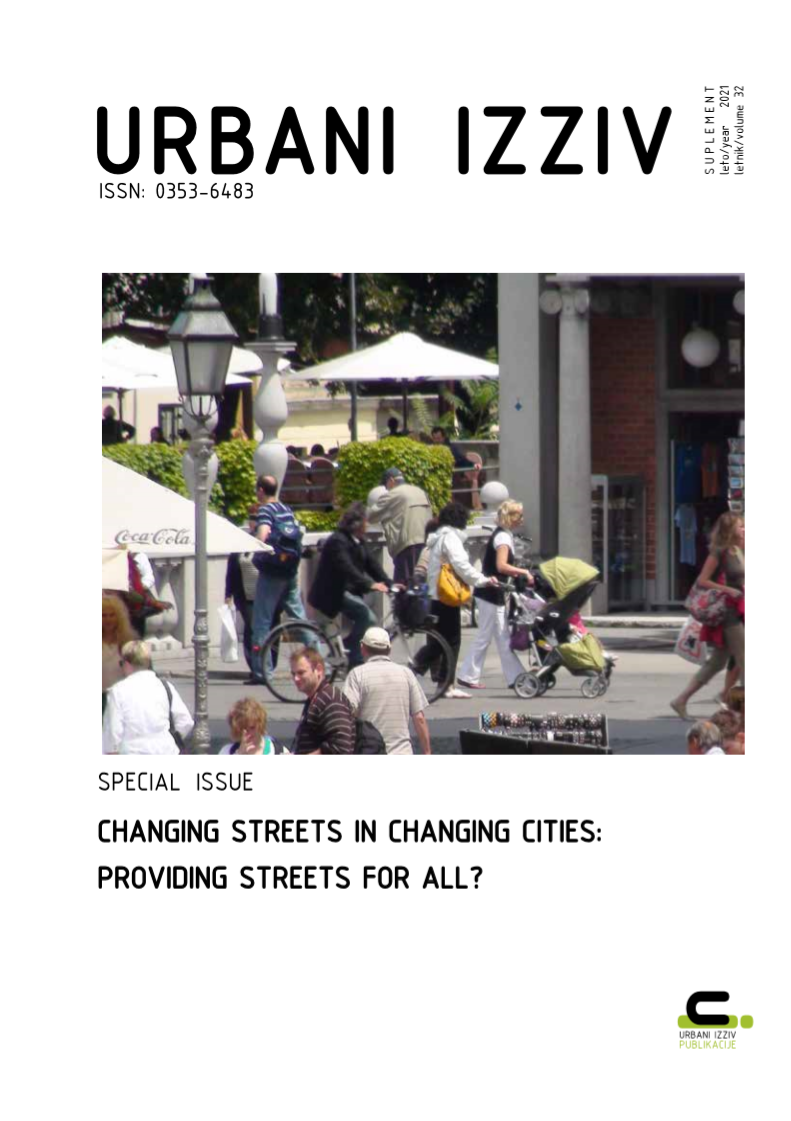 Content
Content
Figures

Figure 1: Figure 1: a) Varaždin on first military survey of the Habsburg Monarchy (1764–1784) (source: https://mapire.eu/en/); b) Urban Development Plan of the historic core of the city of Varaždin (2006) (source: Urbanistički plan uređenja povijesne jezgre grada V

Figure 2: Figure 2: a) Interventions in the subsystems of the public spaces of the centre towards creation of a complete system; b) Ban Josip Jelačić Square and Park project (source: Marić, 2019).

Figure 3: Figure 3: a) Ivanić-Grad on Habsburg Empire cadastral map from 19th century (source: https://mapire.eu/en/); b) Urban Development Plan UPU – 4 for the area Ivanić-Grad, Donji Šarampov, and Jalševec Breški (2008) (source: Urbanistički plan uređenja UPU – 4


Figure 5: Figure 5: Varaždin – first level consideration indicators (illustration: authors).

Figure 6: Figure 6: Ivanić-Grad – first level consideration indicators (illustration: authors).

Figure 7: Figure 7: Varaždin, Ban Josip Jelačić Square and Park – second level consideration (illustration: authors).

Figure 8: Figure 8: Ivanić-Grad, Vladimir Nazor Square – second level consideration (illustration: authors).

Figure 9: Figure 9: Comparative overview of the activation of public spaces in the centre of Varaždin and Ivanić-Grad: a) Varaždin; b) Ivanić-Grad (illustration: authors).
Urbani izziv Volume 32, No. supplement, December 2021
: 37-55
(Articles)
doi: 10.5379/urbani-izziv-en-2021-32-supplement-3
Author
Lea Petrović Krajnik
University of Zagreb, Faculty of Architecture
lea.petrovic@arhitekt.hr
Damir Krajnik
University of Zagreb, Faculty of Architecture
damir.krajnik@arhitekt.hr
Lea Kunek
kunek.lea@gmail.com
Title
Transformation towards sustainability: public space in the city centres of Varaždin and Ivanić-grad
Abstract
The aim of the present article is to show how spatial, morphological, and functional transformation of public space contributes to aspects of sustainability. Research methodology encompasses two levels of urban structure consideration. The first level refers to the area of the city centre, and the second level refers to selected public area in the city centre. Criteria and indicators for the evaluation of planned interventions in public spaces were set and divided into topics of traffic, landscape, facilities, and urban equipment. The relationship between the research project results and the principles of sustainability stated in the Basque Declaration was analysed in order to confirm the hypothesis and possible impact of interventions in the context of achieving sustainability and sustainable development on the local level. It can be concluded that planned activities of transformation and contemporary design of public spaces on the local level have multiple positive effects and add to well-being in the wider spatial context of the city, thus also contributing to the global issue of sustainability.
Key Words
spatial activation, hybrid features, public space system, sustainable development